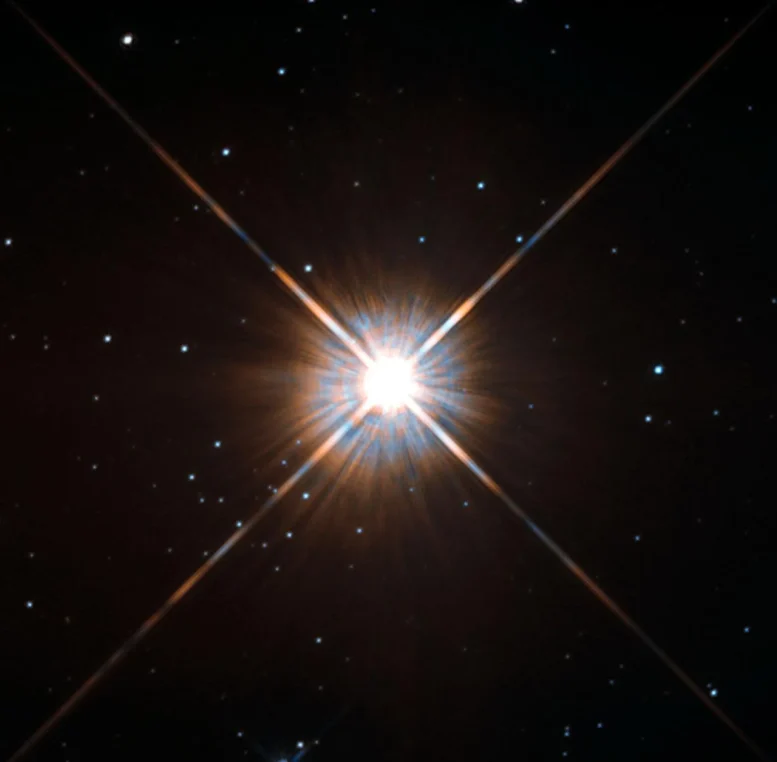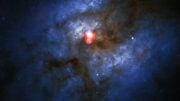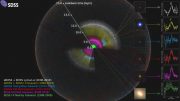
Proxima Centauri lies in the constellation of Centaurus (The Centaur), just over four light-years from Earth. Credit: ESA/Hubble & NASA
This newly released Hubble image shows Proxima Centauri, which is located just over four light-years from Earth.
Shining brightly in this Hubble image is our closest stellar neighbor: Proxima Centauri.
Proxima Centauri lies in the constellation of Centaurus (The Centaur), just over four light-years from Earth. Although it looks bright through the eye of Hubble, as you might expect from the nearest star to the Solar System, Proxima Centauri is not visible to the naked eye. Its average luminosity is very low, and it is quite small compared to other stars, at only about an eighth of the mass of the Sun.
However, on occasion, its brightness increases. Proxima is what is known as a “flare star”, meaning that convection processes within the star’s body make it prone to random and dramatic changes in brightness. The convection processes not only trigger brilliant bursts of starlight but, combined with other factors, mean that Proxima Centauri is in for a very long life. Astronomers predict that this star will remain middle-aged — or a “main sequence” star in astronomical terms — for another four trillion years, some 300 times the age of the current Universe.
These observations were taken using Hubble’s Wide Field and Planetary Camera 2 (WFPC2). Proxima Centauri is actually part of a triple star system — its two companions, Alpha Centauri A and B, lie out of frame.
Although by cosmic standards it is a close neighbor, Proxima Centauri remains a point-like object even using Hubble’s eagle-eyed vision, hinting at the vast scale of the Universe around us.









I focus my Scope on it all the time. I love watching our nearest neighbors.
Proxima Centaurus, our nearest star at about 4 light years away may be very young and bubbling with violent eruptions throwing carona. But I certainly doubt, if it could last for 300 times the present age of the universe anyway since our sun would die with already half the life gone. Our sun may last for another 15 billion years probably, when it will swell and die gobbling up all the planets. Then this small baby also will be consumed definitely is it not by all other neighbors dying? Thank YOu.
I had only ten thousand rupees.